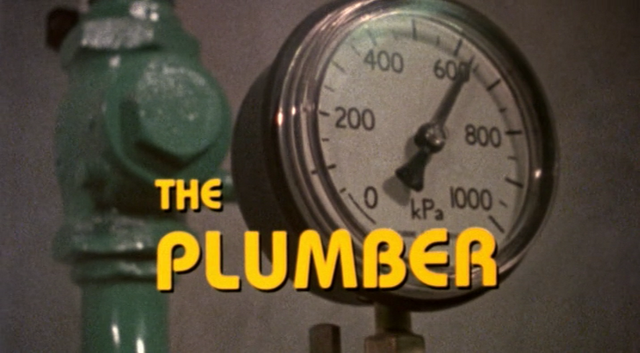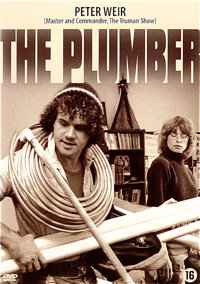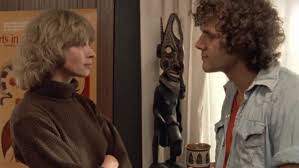I enjoy Australian cinema and have managed to seek out several films over the last few years. This is mostly due to a certain quality that is difficult to quantify or put into words. It is most likely due to several identifiable features present in Australian films from the 70’s and 80’s. The outback, often featured as a setting, provides the viewer with feelings of desolation and uncertainty. Humour is also an important factor in these films, often being extremely dry and irreverent. Films of this nature that spring to mind are – Long Weekend (1978), Road Games (1981), Patrick (1978) – often described as ‘Ozploitation’ there are many other titles, many of which I am yet to discover. For those that are interested, a documentary simply called ‘Not Quite Hollywood: The Wild, Untold Story of Ozploitation!’ (2008) features many titles, some better known than others.
The Plumber is a film that I stumbled upon through a friend. I wrongly assumed that it would be a straight-up slasher type horror. Director Peter Weir is best known for his work on Picnic at Hanging Rock (1975), Dead Poets Society (1989) and Master and Commander (2003.) The Plumber was made shortly after Picnic at Hanging Rock and was originally intended as a TV movie but was later released internationally in cinemas. The actors featured in the film will be recognisable to some, from their appearances in Australian soap operas, particularly Ivar Kants who appeared as school principal Barry Hyde in popular soap Home and Away.
The plot is a simple one, Dr Brian Cowper (Robert Coleby) and his wife Jill (Judy Morris) share an apartment owned by the university where they both work. Dr Cowper is hardly ever at home, constantly out at work and meetings, leaving wife Jill home alone studying for a Masters in anthropology. The film starts as we see Dr Cowper leaving for work and a stranger entering the building. This turns out to be Max (Ivar Kants), a plumber employed by the university who turns up unannounced, claiming that he has some standard maintenance work to do throughout the building. Max begins work by chipping away at the tiles under the bathroom sink and can then be heard showering. When Jill asks what he’s doing he demands that she leaves him to his work. He then tells her that the pipes are a mess and he will have to return to complete more work.
The main body of the film concentrates on Max’s daily visits to the apartment. On each visit the plumbing gets worse and Jill becomes gradually more distressed and upset by Max’s constant harassment and unusual behaviour which gets worse as the film progresses. When Jill attempts to express her concerns to her husband, he simply brushes off her fears as paranoia. One of the most memorable scenes in the film include Max (also a struggling songwriter) penning a protest song in the bathroom, scribing his lyrics in pen on the bathroom tiles and performing the song at top volume, much to Jill’s distress. Another memorable scene is when Max erects scaffolding in the bathroom which renders it largely useless. As the Cowper’s have people for dinner, one of their guests gets himself trapped in the rigging and injures himself. This is a unique, unusual and memorable film which is difficult to categorize. It would be best described as a psychological thriller and certainly has creepiness throughout and is successful at making the viewer feel uncomfortable. The actors featured do a great job, particularly Ivar Kants, who brings a threatening and unhinged quality to Max. The ending was also totally unexpected, if a little abrupt, but gave the sometimes surreal nature of the film a satisfying and logical conclusion.
Stewart Kinloch











